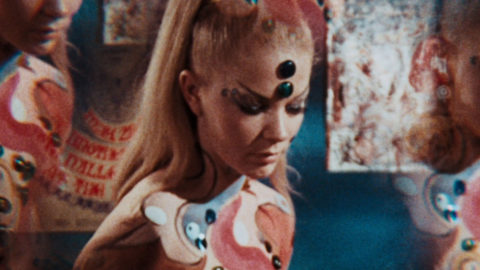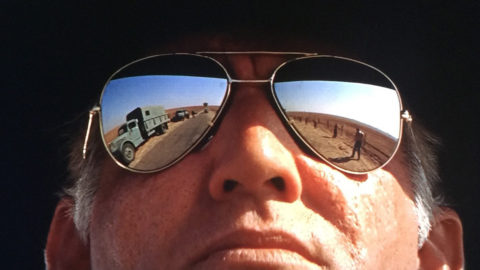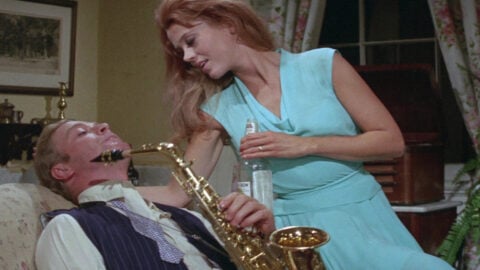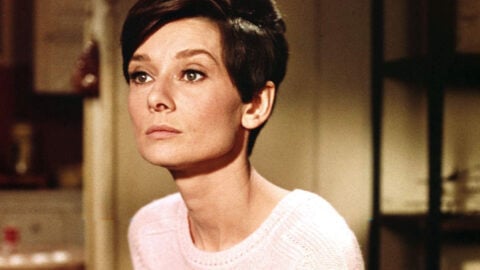Cinema ’67 Revisited: In Cold Blood
In my 2008 book Pictures at a Revolution, I approached the dramatic changes in movie culture in the 1960s through the development, production, and reception of each of the five nominees for 1967’s Best Picture Academy Award: Bonnie and Clyde, The Graduate, In the Heat of the Night, Guess Who’s Coming to Dinner, and Doctor Dolittle. In this biweekly column, I’ve revisited 1967 from a different angle. As the masterpieces, pathbreakers, and oddities of that landmark year reached their golden anniversaries, I’ve tried to offer a sense of what it might have felt like to be an avid moviegoer 50 years ago, discovering these films as they opened.
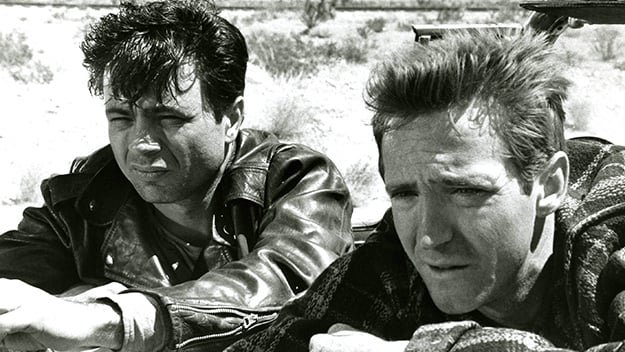
In the fall of 1966, Scott Wilson was sitting in a jailhouse in Sparta, Illinois, talking to Sidney Poitier. Wilson was a 24-year-old parking valet for a topless bar in Southern California who had just landed a showy supporting role in his first movie: the scruffy vagrant picked up on suspicion of murder in Norman Jewison’s In the Heat of the Night—the man Poitier’s Virgil Tibbs eventually exonerates. Poitier had taken an interest in Wilson, even rewriting their interrogation scene to give the young actor more to do. After they rehearsed it, Wilson recalled when I interviewed him in 2006, “Sidney asked me if I was up for In Cold Blood. I said, ‘What’s that?’ And he said, ‘Ask your agent. You should be up for it.’”
Wilson may have been one of the few young actors in Hollywood who hadn’t heard of the project. Truman Capote’s self-described “nonfiction novel” had been the subject of intense speculation—and interest from Hollywood—for years even before The New Yorker published it in four installments in 1965 (breaking its record for newsstand sales with all four issues). As a literary property destined for the movies, it was probably rivaled at the time only by Catch-22. Capote had once described it as a story about six people: murderers Perry Smith and Dick Hickock and the Clutters—the Kansas family of four they killed for no apparent reason in 1959. But from the script’s earliest drafts, it was clear that Smith and Hickock would be the center of the movie’s story, and cocktail-party and gossip-column speculation about who would play them—Paul Newman? Steve McQueen?—was rampant.
Writer-director Richard Brooks, however, made it plain that he wasn’t interested in movie stars. He wanted the film version of In Cold Blood to feel as much like a hybrid as the book had, with one foot in boundary-pushing dark drama and the other in documentary realism. And for that, he wanted new faces, actors who would, for audiences, have no associations outside the characters they were playing. He looked at plenty of newcomers: “I knew Bobby Duvall,” said Dustin Hoffman, “and he went up for it and didn’t get it. He came back and said to me, ‘There’s one thing you can’t fake no matter how good an actor you are, and that’s white trash.’” But Wilson already had an advantage: unbeknownst to him, Poitier (who had been close to Brooks since 1955’s Blackboard Jungle) and Quincy Jones (who was composing the score for In the Heat of the Night and would do the same for In Cold Blood) had been talking Wilson up to the director, and on the last day of shooting for Jewison’s movie, they sent him over to Brooks’s office. Within a couple of months, Wilson and 33-year-old Robert Blake, who had been acting since early childhood but hadn’t yet made much of a name for himself, had landed two of the biggest parts in Hollywood.
It proved to be a mixed blessing. Brooks, a 20-year veteran whose films included Cat on a Hot Tin Roof, Elmer Gantry, and Sweet Bird of Youth, came into In Cold Blood with an exceptionally strong vision of what he wanted. He insisted on shooting the film for Columbia in black-and-white at a time when every other studio and director had abandoned it (the next time a major studio film was shot in black-and-white would not be until 1971’s The Last Picture Show), and—somewhat frustratingly for his two stars—he was determined to keep his leading men as unknown as possible. “I don’t think that you ran across an article that Brooks did, and there were many, where he even mentioned our names,” said Wilson. “He just called us ‘the boys’ and then talked a lot about who he could have gotten. If that sounds bitter, I don’t mean it to be—it’s just the reality that was with me at the time.” It was not an easy shoot. “Brooks was like an active volcano that you knew was going to erupt but you didn’t know when, although after a certain amount of time, I learned to anticipate it. In fairness to him, he didn’t select his victims by pecking order—one day it was the best boy, one day it was the head of the studio or Conrad [Hall, the cinematographer]. But I’ll say this: everyone knew they were working toward a purpose. You knew something was going on—you could feel the electricity.”
***
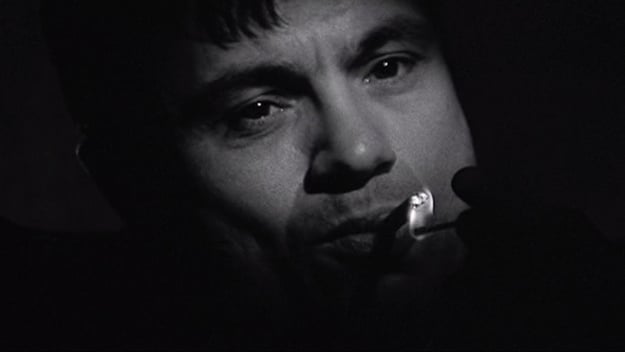
In the ten years since Pictures at a Revolution was published, one of the questions I’ve been asked most frequently is: what was the “sixth” Best Picture nominee, the film that finished just out of the running? The Academy never releases its vote totals, and there are educated-guess cases to be made for Camelot, Cool Hand Luke, and Wait Until Dark. But I have always suspected that In Cold Blood is the film that just missed. The four Academy Award nominations it received included two for Brooks, for his direction and screenplay, suggesting that the film was in the thick of the competition (Jones’s score and Hall’s cinematography were also nominated).
In a way, “just missed” is a reasonable summary of In Cold Blood’s reception. Upon its New York opening in December 1967, the film was greeted with widespread respect by critics—particularly those who, like Bosley Crowther of The New York Times, had deplored what they saw as the flippant and irresponsible use of violence in Bonnie and Clyde and were eager to bludgeon it with In Cold Blood as a counterexample of sobriety and maturity. (In fact, one of the strongest and most effective creative decisions Brooks made was to build to the murders in quiet, fragmentary flashback in the film’s last third; while nothing graphic is shown, you feel the terror and senselessness in every shot and cut.) And the movie was a solid hit, returning $6 million in rentals on an investment of $3.5 million, making it the 17th-highest-grossing movie of 1967.
And yet, there was a lingering sense, even among some of the film’s creative team, that it should have been bigger. “Whenever I talk about In Cold Blood, I always say it was overpublicized,” said Brenda Currin, who, as a Kansas college student, was cast as teenager Nancy Clutter. “Everything about it—the making of the movie, the selling of the film rights to Richard Brooks, it was the cover of Life magazine, there were huge articles in The New York Times and Newsweek—and then, of course, it opened in the same two weeks as The Graduate and [the wide re-release of] Bonnie and Clyde, and it was lost. It opened at Cinema I without any fanfare, because of the nature of the story. I think that Columbia felt it was the most tasteful, respectful way to handle it. And that choice just seemed to characterize its low profile, although it somehow endured.” (Capote, for his part, hosted a premiere screening for 85 friends, including Lee Radziwill, Leonard Bernstein, Mike Nichols, Alan Jay Lerner, Arthur Schlesinger, Katharine Graham, and William F. Buckley Jr., explaining, “I just want to open it in a quiet way.”)
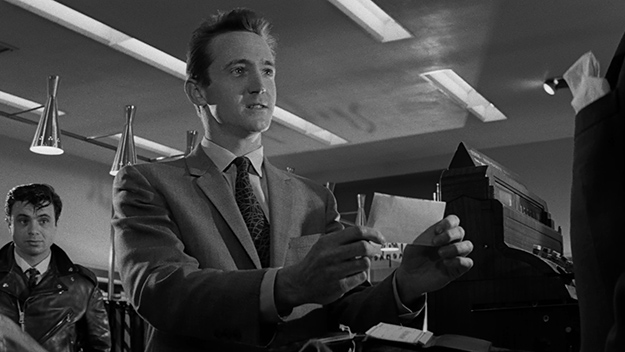
Over the 50 years since then, In Cold Blood has seemed perennially on the verge of rediscovery. Capote’s book has never been out of print, and attention returned to Brooks’s movie in 1996, when it was remade for television with Eric Roberts and Anthony Edwards; again in 2005 when Bennett Miller’s Capote, about the author’s work on the book and relationship with the killers, was released; again in 2015 when Criterion released Brooks’s film; and again earlier this fall when documentarian Joe Berlinger revisited the case in the Sundance TV miniseries Cold Blooded: The Clutter Family Murders. To watch the film today is to see a thoughtful piece of work that is, in its way, the most emblematic of American studio movies circa 1967: it is a film poised uncomfortably in a temporal no-man’s-land that seems to belong in part to the innovations of the just-dawning New Hollywood era, in part to a tradition of earnest, socially progressive anti–death-penalty movies from a decade earlier, and in part to no time at all. Brooks himself said bluntly, “If I thought this movie didn’t have relevance to a general social problem, I wouldn’t be making it”—although, marking himself as a filmmaker who might have been comfortably at home in 2017, he identified that social problem as economic inequity.
Brooks was a director who tended to grab for prestigious material from publishing or Broadway, make whatever compromises in content might be necessary to get it to the screen, and never look back. In his adaptation of In Cold Blood, his compromises are apparent. He told the Times before production that he was still struggling over what the reporter described as “how to convey Perry’s homosexual hang-up,” and it’s clear from the movie that what he decided to do was simply cut it, just as he had been forced to do with Brick in Cat on a Hot Tin Roof. (Brooks had also seen his own 1945 novel The Brick Foxhole, about a Marine on a weekend pass who murders a homosexual, turned into the movie Crossfire, about the murder of a Jew.)
Brooks could be plodding and stolid. “An audience feels first,” he said during production. “And they want to be told what the point is.” But In Cold Blood also shows how willing he was to abandon his prestige-filmmaking comfort zone and pull the audience out of its own. With the severe, powerful starkness of Hall’s black-and-white cinematography, a heavy gray Kansas sky lowering over the characters, it looks like no other American film of the era, and effects that could feel showy in lesser hands—most notably a climactic scene in which Blake delivers an emotional monologue standing next to a rainy window, the reflection creating a pattern of tears on his face—seem fully earned here.
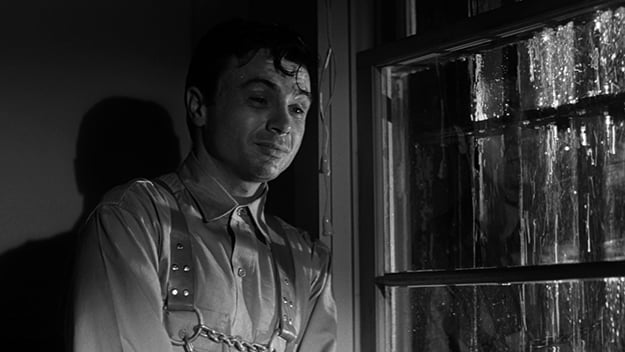
Brooks clearly strove for a kind of uninflected plainness in the performances of his large (and largely local) supporting cast; many of the Kansas actors almost seem like re-enactors, going about their jobs with little adornment or emotionalism (an approach that probably hurt it with Oscar voters). Its dryness has real force; there is nothing sentimental or particularly pleasant in his vision of heartland America. Some elements of In Cold Blood have not aged particularly well, notably the overemphatic use of Jones’s score, which alternates weighty Copland-esque classicism for the Clutters with dissonant jazz riffs for Hickock and Smith and rarely feels like anything but a mismatch for the material. For much of its 134-minute length, In Cold Blood feels stilted; it never finds the relentless drive of the book—what Capote called “vertical storytelling,” in which the writer drills ever deeper into a subject. But the movie gathers power as it continues, both from Brooks’s stern eye and tight grip on the reins and from the immersive, foreboding feel of the Kansas locations—including the actual house in which the Clutters were murdered, which Blake said at the time made him feel “squirrely.”
In its final third, the two timelines of In Cold Blood—the murder and the impending execution of the killers six years later—reach a paired climax as bleak and uncompromised as any movie of the time. The movie becomes a twinned meditation on the taking of life, and if it was always doomed to live in the shadow of its source material, at least it never dishonors it. (Capote himself admired it as an effective distillation of his work.) In Cold Blood may not have been a fully triumphant end to 1967—it is more a picture of evolution than of revolution—yet it was a fitting one: the work of an American filmmaker daring himself to take one small step into whatever the future of movies would prove to hold.
How to see it: In Cold Blood is available on DVD and Blu-ray from the Criterion Collection, and streams on Amazon, YouTube, Vudu, and Google Play.
Mark Harris is the author of Pictures at a Revolution: Five Movies and the Birth of the New Hollywood (2008) and Five Came Back (2014).



